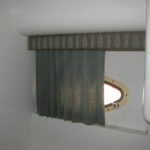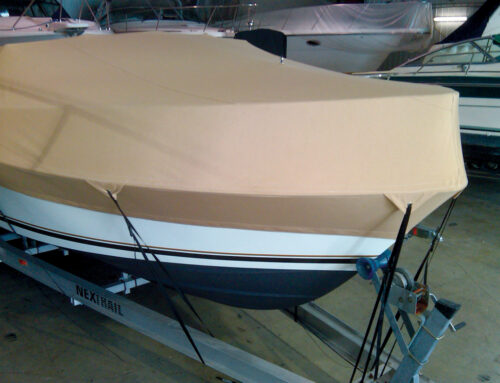Planning for a complete renovation
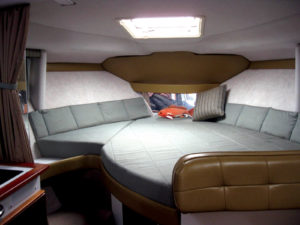
This fabric was selected for its ability to blend with the other elements.
Winter is here and many shops have been shoveling snow. How could that be good for the boat repair business? Well, if you have been planning ahead, it means good things.
Throughout the year, as customers come into our shop for estimates, we pick certain projects to work on during our “slow time.” We offer our customers a better rate (project rate) if they wait until the winter months to restore the boat.
Generally, these are total restorations that will require a lot of time to complete. This situation offers the best price to the customer. They are not rushing you to get it done, and you have plenty of time to prepare for the repairs.
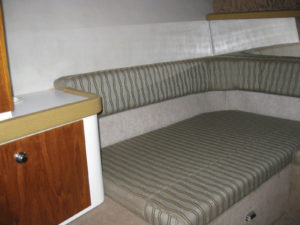
This fabric in the midberth was selected to pull together the carpet color and the seafoam from the dinette table.
We usually set up progressive payments from the boat owners so we don’t get caught in a cash flow drought. We like to have three or four of these projects lined up per season. The advantage to this is that we can jump from one to the other if we have delays waiting for materials.
We were very excited to get the renovation of a 31-foot Formula PC. This job was extensive, replacing wall coverings with teak, replacing carpet with teak and holly floor, upgrading appliances, all new canvas, new vinyl stripes on the hull, and, of course, all new upholstery in the cabin and the cockpit.
The interior design was a little more difficult. By replacing the light-colored carpet and wall coverings with teak, the interior appeared much smaller. The customer wanted to keep the original dinette table that has a large seafoam stripe in it. The customer finally decided on a total of four fabrics.
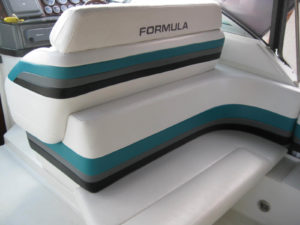
The cockpit upholstery colors were an easy choice. We matched the hull stripe colors and stayed close to the original factory design.
We had to figure a way to make the patterns flow through the cabin. We would use one fabric for the primary midberth color, one fabric for the forward berth primary color, one color for the salon/dinette area, and the last fabric was used for things like privacy curtains.
The trick to making this many colors and textures come together is using them in the right place and accessorizing. I used a combination of two different fabrics for most of the window dressings.
When I look at cabin cushions, I like to try to make the upholstery really fit the boat’s and customer’s style. The smaller the cabin, the more obvious your work will be.
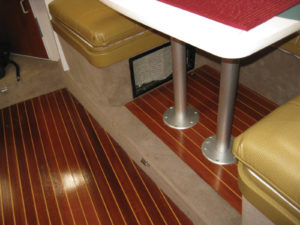
This faux ostrich was selected to blend with the rich colors of the teak and holly floor.
The cabin V-berth had two issues to contend with. The first issue is the table that goes in the middle meant sliding across the cushions to get all the way around. To try to keep the fabric from being stretched out of shape, I divided the top into several pieces and added ¼-inch sew foam. The other issue was the pattern of the fabric. This design had small diamonds that had a very distinct direction. By creating a sunburst design, I was able to orientate the pieces at angles so that the diamonds followed the curve around to match with the side seat cushions.
-
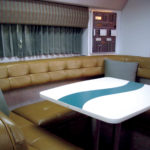
- The solid privacy curtains were trimmed with fabric from the forward berth cushions. A few throw pillows were made from the berth fabrics. One word about pillows on a boat: keep them to a minimum. Where are they going to put them when it’s bedtime?
-
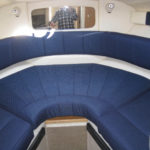
- Using a sunburst design in the forward cushion gives the appearance of being larger than it really is, even though we are using a darker color.
Carol Racine is owner of Racine Design in Jacksonville, Fla.
 TEXTILES.ORG
TEXTILES.ORG 


